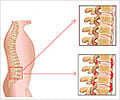While physicians strive to set realistic expectations for patients undergoing knee and hip joint replacements, a new study reveals that doctor and patient expectations are sometimes not aligned.
While physicians strive to set realistic expectations for patients undergoing knee and hip joint replacements, a new study reveals that doctor and patient expectations are sometimes not aligned. The study, reported by Hospital for Special Surgery researchers at the American Academy of Orthopedic Surgeons held March 9-13 in New Orleans (poster P140), suggests that steps need to be taken to bridge the expectation gap.
This study is among the first to examine discrepancies in patient and physician expectation with joint replacement surgeries, according to Hassan Ghomrawi, Ph.D., MPH, outcomes research scientist, Biostatistics and Epidemiology, at Hospital for Special Surgery (HSS) in New York, who led the study.The two joint replacement surgeries studied are known technically as total hip replacement (THR) and total knee replacement (TKR). These procedures are common in individuals over 50 and usually result from normal wear and tear that causes osteoarthritis. At Hospital for Special Surgery alone, nearly 4,000 THRs and 4,000 TKRs are performed each year.
At HSS, patients are required to attend a 90 minute class before surgery where they receive education from a specialized nurse about what they can expect during the surgery and recovery. "A leader in offering such classes, HSS has been giving a preoperative class for many years. This practice is becoming a trend in big hospitals for this type of surgery," Dr. Ghomrawi said. The results from this study indicate that such classes could be refined and steps can be taken to use these classes to improve patient and physician dialogue.
In a study that compared expectations of 42 patients with their doctors through surveys, investigators found clinically meaningful disagreement in 68 percent of patients with 53 percent of the patients' expectations exceeding the expectations of the surgeons.
"The take home message for the surgeon is that inexpensive, educational interventions like a preoperative class can be used to better align the patient's and the surgeon's expectations prior to surgery," said Alejandro Gonzalez Della Valle, M.D., associate attending orthopaedic surgeon at HSS, who was involved with the study. "This may ultimately result in higher perceived outcome."
"If a patient has unrealistic expectations that are not properly trimmed preoperatively or achieved after surgery, the patient will most likely be dissatisfied with some aspects of the final result. Conversely, if the patient has low expectations for function after surgery, it is likely that he or she will not enthusiastically engage in the different phases of the postoperative recovery including physically therapy. That patient will probably have a lower than expected functional result.
Advertisement
The study included patients who were scheduled to receive a hip or knee replacement by a dedicated hip and knee surgeon. Both patient and doctor completed either a THR or TKR recovery expectation questionnaire. The surveys involved various questions with a scale from 1 to 5, ranging from a 1 being "return to normal," to a 4 being "very little improvement," and 5 being "I don't have this expectation."
Advertisement
The knee joint replacement survey had 19 questions involving improvement in psychological well-being, pain relief, ability to walk different distances, getting rid of a cane, going up and down stairs, kneeling, squatting, using transportation, the ability to be employed, and the ability to participate in recreation, social activities, sports, and sexual activity.
The numbers from each of the questions on the survey were then plugged into a formula that calculated a score ranging from 0 to 100, with 100 being the highest expectation. The study involved 25 patients undergoing THR and 17 patients undergoing TKR. Both patients and doctors completed surveys. The average surgeon expectation score was 75 (range 43 to 93) and the average patient expectation score was 84 (range 47 to 100).
"We observed a lot of variability between what the surgeon expected and what the patient expected. In an ideal world, the expectations of the patient and the surgeon should be similar," Dr. Gonzalez Della Valle said.
Based on results from this pilot study, the National Institutes of Health has awarded Dr. Ghomrawi a five-year career development award. "The hope is to be able to study the relationship between expectation discordance and several outcomes down the road, including rehabilitation outcomes at discharge, and six month and two-year follow-up functional outcomes," Dr. Ghomrawi said. "We are trying to see which items of discordance are clinically meaningful. And then we want to use all this information to improve the doctorpatient dialogue as well as to reassess the class content, so that expectations are aligned."
"The larger study will be more complex. We will try to analyze the discrepancies that different doctors may have for the same patient and that different doctors have between themselves when assessing the same patient," Dr. Gonzalez Della Valle said. "What are the physician factors and patient factors that can predict higher or lower expectations? The goal of THR and TKR surgeries is to provide durable pain relief and improvement of function so that patients can go back to an enjoyable, productive life. We want to make patients satisfied. We know that hip and knee replacement operations are very successful. But we are trying to go a step further, looking at the psychology of the patient recovery."
Source-Eurekalert
TAN














